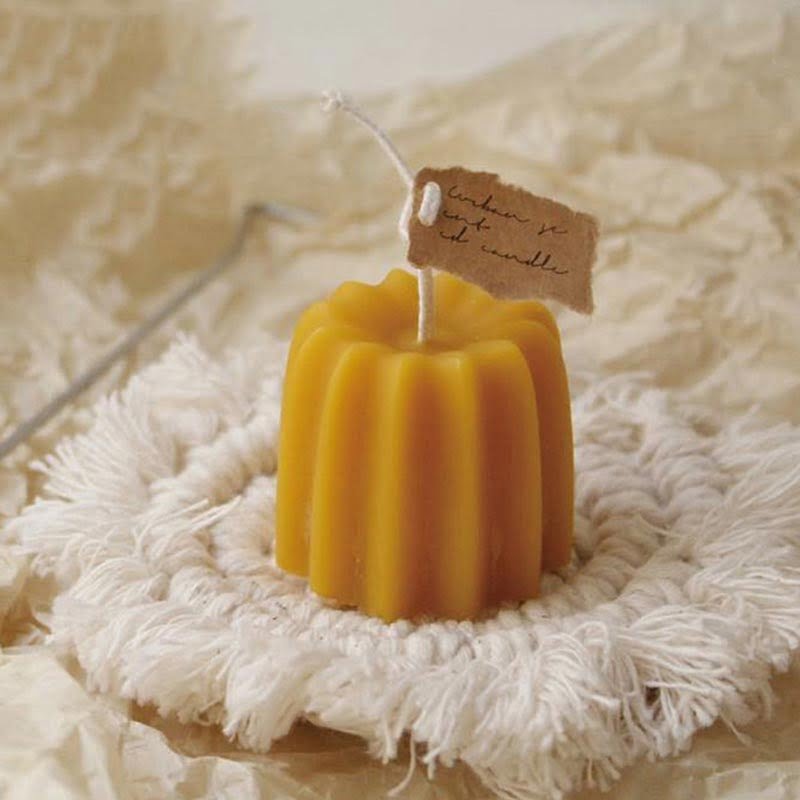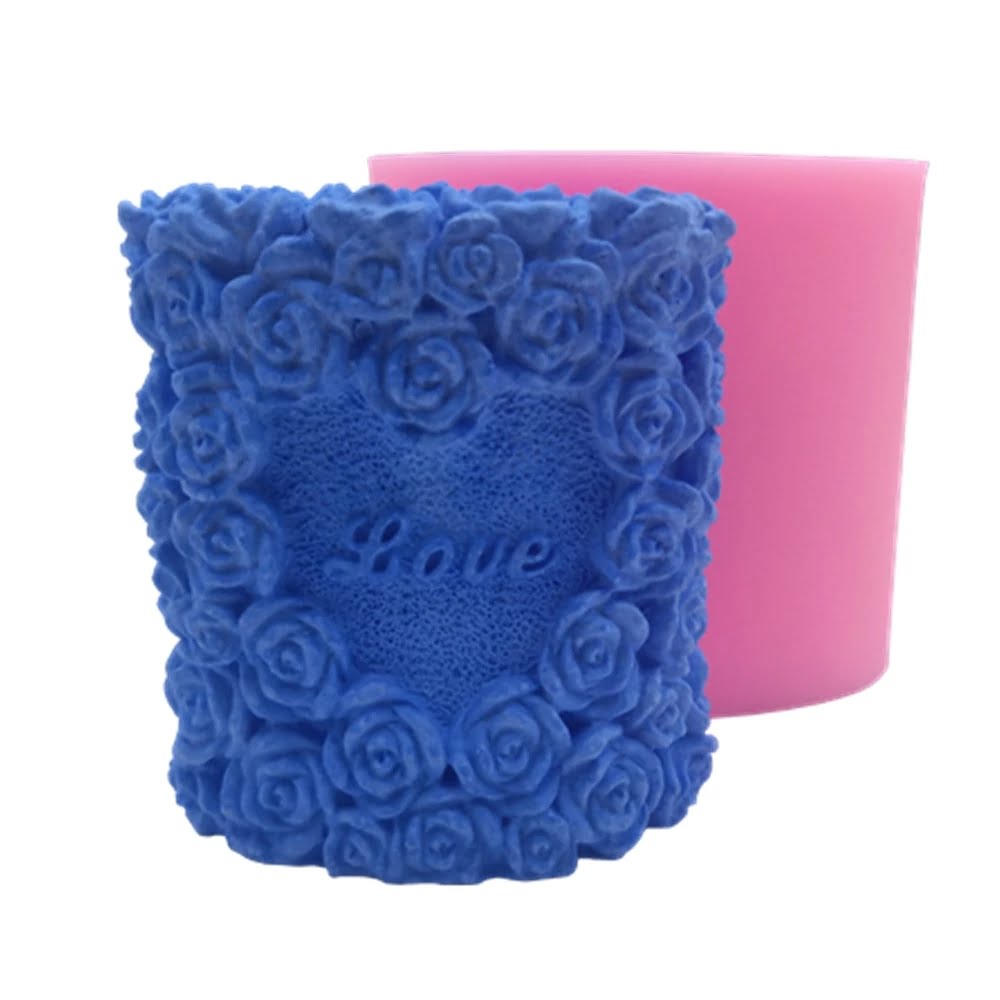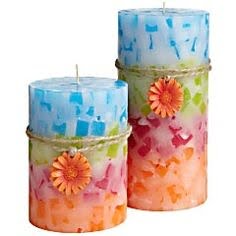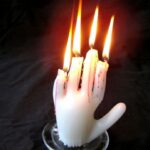Scent is an essential aspect of candle making, creating an atmosphere and evoking emotions. However, achieving the perfect scent experience extends beyond just the burning of a candle. Enter “cold throw,” a crucial concept in the realm of candle making that determines the fragrance’s potency when the candle is not lit. In this article, we will explore what exactly cold throw means in candle making and its significance in creating high-quality, marketable candles.
In the world of candle making, cold throw refers to the strength or intensity at which a fragrance emanates from an unlit candle. It gauges how well a scent is detectable when simply walking past or being near the candle without it being burned. The term “cold throw” encompasses the overall smell concentration, diffuseness, and longevity that can be experienced without any heat source.
Within the industry, there are differing interpretations of cold throw depending on individual preferences and expectations regarding scent performance. Some might prioritize stronger cold throws to ensure their candles effectively fill a room with fragrance even while unlit, while others may prefer more subtle cold throws for a delicate ambiance.
Understanding and harnessing cold throw is crucial for any candle maker striving to create exceptional products. Various factors contribute to its potency, including ingredients used, wax type, choice of fragrance oils, wick size, and even the type of container used for candles. By optimizing these factors and enhancing cold throw performance, makers can elevate their candles’ quality and appeal to discerning customers who value long-lasting fragrances throughout their space.
Stay tuned as we delve deeper into differentiating interpretations of cold throw within the industry and explore techniques to enhance this vital aspect in your candle making endeavors. With our comprehensive guide on understanding and improving cold throw performance, you can master this intricate science and unlock your candles’ full aromatic potential.
The Definition and Interpretation of Cold Throw
In the world of candle making, the term “cold throw” refers to the scent that is released when a candle is unlit. While many people associate candles primarily with their fragrance when they are lit, cold throw plays a significant role in determining the overall quality and marketability of a candle. Understanding the definition and interpretation of cold throw is crucial for candle makers who strive to create candles with an excellent scent experience for their customers.
Cold throw can be defined as the aroma emitted by a candle without any external heat applied. It represents how well the fragrance disperses into the air when the candle is not burning.
This is important because candles are often purchased based on their scent alone, and customers expect them to have a pleasant aroma even before being lit. A strong and appealing cold throw is indicative of a high-quality candle that will likely have a strong hot throw, which is the scent released when the candle is burning.
Within the industry, there can be different interpretations and objectives regarding cold throw. Some candle makers aim for a powerful cold throw that fills a room even without being lit. They want customers to be immediately captivated by the fragrance as soon as they enter an area where the candles are displayed. Others prioritize subtlety in their cold throws, aiming for scents that are more delicate and gentle. Ultimately, it depends on the brand’s target audience and their preferences.
Understanding what contributes to an effective cold throw is essential for improving its performance in candles. Various factors can influence how well a candle’s scent disperses when unlit, including ingredients, wax type, fragrance oils, wick size, and even the type of container used for the candle. These factors interact with each other intricately, requiring careful considerations during the formulation and manufacturing process.
In order to optimize cold throw in candles, it may be necessary to experiment with adjustments in fragrance load, curing time, or even blending multiple scents together to create unique and appealing aroma combinations. Each candle maker may need to find their own techniques and strategies to enhance the cold throw of their products.
By understanding the role of fragrance oils and avoiding common mistakes that can diminish cold throw, aspiring candle makers can elevate their craft and create candles with captivating scents that entice customers even before they are lit.
| Factors Influencing Cold Throw | Description |
|---|---|
| Ingredients | The choice of ingredients used in the candle formulation can impact the effectiveness of cold throw. |
| Wax type | Different types of wax have varying abilities to hold onto and release fragrance, which affects cold throw. |
| Fragrance oils | The quality and composition of fragrance oils used can greatly influence the intensity and longevity of a candle’s cold throw. |
Factors Influencing Cold Throw
In the world of candle making, achieving a strong and pleasant cold throw is essential for creating high-quality candles that customers will love. The cold throw refers to the scent that is emitted by a candle when it is not lit.
It plays a crucial role in determining the overall marketability and success of a candle. Several key factors can influence the cold throw of a candle, including the ingredients used, wax type, fragrance oils, wick size, and even the candle container.
The choice of ingredients is one of the most important factors affecting cold throw. High-quality materials such as natural waxes and fragrances tend to have better scent retention and stronger cold throws compared to lower-grade alternatives. Additionally, the ratio of fragrance oil to wax (also known as fragrance load) can significantly impact cold throw. A higher fragrance load will typically result in a more powerful scent when the candle is unlit.
The type of wax used in candle making also plays a critical role in determining its cold throw. Different waxes have varying abilities to hold and release fragrance oils. For example, soy wax is known for its excellent scent distribution and an impressive cold throw. In contrast, paraffin wax may require more fragrance oil and specific additives to achieve a desired cold throw.
Size matters when it comes to selecting the right wick for your candle. The wick’s diameter influences how much heat is generated during burning, which affects how much fragrance oil is vaporized into the air. If the wick size is too small for your candle container, there might be insufficient heat generated to release enough scent into the surrounding area.
Lastly, the choice of candle container can impact how well the fragrance disperses into the air. Factors such as material, shape, size, and even transparency can influence how efficiently the cold throw travels beyond just immediate proximity.
Understanding these factors that influence cold throw allows candle makers to make informed decisions and experiment with different combinations to achieve the desired olfactory experience. By optimizing these factors, candle makers can create candles that offer an enchanting and captivating cold throw.
Importance of Cold Throw in Candle Quality
In the world of candle making, the cold throw plays a vital role in determining the overall quality and marketability of a candle. But what exactly does cold throw mean? Cold throw refers to the ability of a candle to emit its scent even when it is not lit or burning. It is essentially the strength and diffusion of fragrance when the candle is at room temperature.
Cold throw is highly important because it sets the first impression for customers as they enter a room where candles are placed. The initial scent they experience can greatly influence their decision to purchase the product. A strong and pleasant cold throw creates an enticing ambiance, making customers more likely to choose that particular candle over others.
Various factors can affect the cold throw of a candle. Firstly, the choice of ingredients such as wax type and fragrance oils plays a significant role. Different waxes have different qualities that can impact scent diffusion. Additionally, selecting high-quality fragrance oils that have been specifically formulated for cold throw can make a big difference in achieving optimal scent performance.
The size of the wick and the type of container used also contribute to cold throw. A larger wick size may create more heat, resulting in better scent diffusion when unlit. Furthermore, certain types of containers, such as those with wide openings or material that allows for heat transfer, can enhance cold throw by allowing more fragrance molecules to evaporate into the air.
To improve the cold throw of your candles, there are several techniques you can employ. Adjusting the fragrance load by either increasing or decreasing the amount used can help fine-tune the strength of cold throw. Allowing your candles to cure for an adequate amount of time before selling or using them will also enhance their scent performance. Additionally, experimenting with scent blending – combining different fragrances to create unique and captivating scents – can greatly improve your candle’s cold throw.
Techniques to Enhance Cold Throw in Candle Making
One of the key aspects that determine the quality and marketability of a candle is its cold throw. Cold throw refers to the ability of a candle to release its scent when it is unlit. It is the first impression that customers get when they encounter the candle, and it can strongly influence their purchasing decision. In this section, we will explore some techniques that can enhance the cold throw in candle making.
- Adjusting Fragrance Load: One of the primary factors that affect cold throw is the amount of fragrance oil used in the candle. Increasing or decreasing the fragrance load can have a significant impact on how strong and noticeable the scent is when the candle is unburned.
It’s essential to find the right balance, as using too much fragrance oil can lead to an overpowering scent, while using too little may result in a weak cold throw. - Curing Time: Allowing candles to cure for a sufficient amount of time can help enhance their cold throw. Curing refers to letting candles sit for an extended period, usually about two weeks, after they have been made. During this time, chemical reactions occur within the wax, allowing the fragrance oils to fully blend with the wax and develop a stronger scent profile. Patience is key when it comes to curing candles for optimal cold throw.
- Scent Blending: Experimenting with different combinations of fragrance oils can also be an effective technique for enhancing cold throw in candle making. Certain scents complement each other and can create a more complex and captivating aroma when blended together. By testing various scent combinations and ratios, candle makers can discover unique and alluring fragrances that stand out in terms of their cold throw.
Understanding the Role of Fragrance Oils in Cold Throw
In the world of candle making, fragrance oils play a crucial role in achieving the desired cold throw. Cold throw refers to the scent that is released from a candle when it is not lit. It allows individuals to experience the aroma of the candle without actually burning it. Understanding how fragrance oils contribute to cold throw can help candle makers enhance their creations and create an enticing sensory experience for customers.
The Significance of Fragrance Oils
Fragrance oils are specially formulated oils that are specifically designed to be used in candles, soaps, and other scented products. These oils contain a combination of natural and synthetic aromatic compounds that give candles their unique scents. When it comes to cold throw, fragrance oils are the key ingredient responsible for releasing pleasant and appealing fragrances into the air.
Types of Fragrance Oils and Their Influence on Cold Throw
Different types of fragrance oils have varying effects on cold throw. Some fragrance oils are known for their strong scent throw, meaning they have a powerful aroma even when the candle is not burning. On the other hand, some fragrance oils may have a weaker cold throw but develop a stronger scent when the candle is lit.
Additionally, certain fragrances may have better cold throws than others due to their chemical composition or volatility. For example, floral scents like lavender or rose tend to have excellent cold throws because their molecules easily evaporate at room temperature.
Experimenting with different types of fragrance oils can be an effective way to achieve optimal cold throw in your candles. By selecting high-quality fragrance oils that are specifically designed for use in candles and considering their individual characteristics and performance, you can fine-tune your cold throw and create captivating scents for your customers to enjoy even before lighting the candle.
Overall, understanding the role of fragrance oils in achieving desired cold throw is essential for candle makers looking to elevate their craft and create enticing, aromatic experiences. By selecting the right fragrance oils and experimenting with different types, candle makers can enhance their cold throw capabilities and create candles that delight the senses, attracting customers with their captivating aromas.
Common Mistakes Affecting Cold Throw and How to Avoid Them
Overloading with Fragrance Oil
One common mistake that can negatively affect the cold throw of a candle is overloading with fragrance oil. While it may be tempting to add more fragrance oil to enhance the scent, excessive amounts can actually hinder the cold throw.
When there is an excess of fragrance oil, it can overwhelm the wax and prevent it from releasing the scent properly when not lit. To avoid this mistake, it is important to follow recommended fragrance load guidelines provided by suppliers or undergo testing to determine the optimal amount of fragrance oil for a specific wax type.
Inadequate Cure Time
Curing time refers to the period during which a newly poured candle needs to set before it can be burned or used. Insufficient cure time can greatly impact the cold throw of a candle. Without proper curing, the fragrance oils may not have enough time to blend well with the wax and fully develop their scent profile.
This can result in weak or inconsistent cold throw. To avoid this mistake, candle makers should ensure that their candles are given adequate time to cure according to the guidance provided by their wax supplier.
Incorrect Wick Size
The wick size plays a crucial role in determining both the burn performance and cold throw of a candle. Using an incorrect wick size can impede fragrance distribution and affect cold throw negatively.
If the wick is too small, it may not generate enough heat to release a sufficient scent when unlit; on the other hand, if the wick is too large, it could produce excessive heat that causes an intense hot throw without improving cold throw. It is essential for candle makers to carefully select wicks based on factors such as diameter, wax type, and desired burn characteristics to achieve optimal cold throw.
Unsuitable Candle Container
The choice of candle container can also impact the cold throw of a candle. Certain materials, such as thick ceramic or metal tins, can act as barriers that restrict the scent from permeating the surrounding environment when the candle is unlit.
To avoid this mistake, it is advisable to choose containers made of materials that allow for better scent diffusion, such as lightweight glass or porous materials. Additionally, considering the size and shape of the container in relation to the quantity and type of wax used can also influence cold throw performance.
By being aware of these common mistakes and taking steps to avoid them, candle makers can greatly improve the cold throw of their candles and ensure that customers experience a delightful scent even before lighting them. It is essential for candle makers to carefully consider factors such as fragrance oil quantity, curing time, wick selection, and container choice to optimize cold throw performance.
Avoiding these mistakes will help achieve a more satisfying sensory experience for customers and elevate the overall quality of their candles.
Troubleshooting Cold Throw Issues
When it comes to candle making, achieving the desired cold throw can sometimes be challenging. Cold throw refers to the strength of a candle’s scent when it is unlit and at room temperature.
It is crucial to address any issues with cold throw as it directly affects the overall quality and marketability of a candle. In this section, we will discuss potential problems and challenges associated with achieving the desired cold throw, as well as troubleshooting techniques to overcome these obstacles and improve cold throw performance.
One common issue that can affect cold throw is using the wrong type or amount of fragrance oil. Fragrance oils are a key component in determining the scent strength of a candle. If you are experiencing weak cold throw, consider reevaluating the type and amount of fragrance oil you are using.
Some fragrance oils are not specifically designed for candles and may not perform well in terms of scent distribution. Additionally, using too little or too much fragrance oil can impact the intensity of cold throw. It is essential to carefully measure and follow recommended guidelines for fragrance load in order to achieve optimal results.
Another factor that can impact cold throw is insufficient curing time. After pouring your candles, it is important to allow them an appropriate amount of time to cure before testing their scent strength. Curing refers to the process where the wax and fragrance oil blend together and develop their full scent potential. If you are experiencing weak cold throw, try extending your curing time by a few days or weeks to see if there is any improvement.
Furthermore, the type and size of wick used in your candles can also influence cold throw. Wicks that are too small may not produce enough heat for proper fragrance diffusion, resulting in weak cold throw.
On the other hand, wicks that are too large can create excessive heat which may cause the fragrance oil to evaporate too quickly, thus diminishing cold throw as well. It is important to choose wicks that are properly sized for the diameter of your candle vessel and experiment with different wick types to find the best match for your fragrance and wax combination.
Conclusion
In conclusion, cold throw is a crucial aspect of candle making that directly impacts the quality and marketability of the product. Understanding and harnessing the power of cold throw can greatly enhance your candle making game. By paying attention to factors such as ingredients, wax type, fragrance oils, wick size, and candle container, you can optimize the cold throw of your candles.
It is important to recognize that cold throw is not only valued by candle makers but also by customers. The scent of a candle can create a pleasant ambiance and evoke certain moods or memories. Customers often make purchasing decisions based on how well a candle’s scent fills their space even before it is lit. Therefore, improving the cold throw of your candles can significantly impact sales and customer satisfaction.
To maximize the cold throw in your candles, there are several techniques you can employ. Adjusting fragrance load, allowing for sufficient curing time, and experimenting with scent blending are some effective strategies. Additionally, choosing high-quality fragrance oils that are specifically designed for optimal cold throw can greatly enhance the aroma experience.
While striving for an impressive cold throw, it is essential to be aware of common mistakes that may hamper its effectiveness. These include using incorrect measurements or ratios, neglecting appropriate cure times, or failing to account for suitable wick sizes. By avoiding these pitfalls and troubleshooting any issues that arise during the process, you can achieve consistent and outstanding cold throws.
In summary, embracing the magic of cold throw allows you to elevate your candle making abilities. By understanding its intricacies and implementing techniques to enhance its impact, you can create candles that captivate customers with their enticing scents. So don’t be afraid to experiment and continually improve your skills in maximizing cold throw – your candles will thank you for it.
Frequently Asked Questions
How do you improve cold throw in candles?
Improving cold throw in candles refers to enhancing the scent of a candle when it is not lit. There are several ways to achieve this. Firstly, selecting high-quality fragrance oils or essential oils that have potent and long-lasting scents can significantly improve cold throw. It’s important to use oils that are specifically formulated for candle-making to ensure they disperse well in the wax.
Additionally, increasing the fragrance load by adding more oil per pound of wax can also amplify the cold throw. Properly blending and thoroughly mixing the fragrance into the melted wax is crucial to ensure an even distribution of scent throughout the candle. Lastly, allowing candles to cure for at least a week before selling or using them will give the scent time to fully develop and enhance the cold throw.
What is cold throw wax?
Cold throw wax refers to a specific type of wax used in candle-making that is designed to release fragrance even when unlit. The properties of cold throw wax allow it to hold and disperse scents effectively, ensuring a pleasant aroma is emitted from the candle without needing heat from a flame.
Cold throw wax often contains additives that help carry and release the fragrance, as well as offer other benefits such as better adhesion with glass containers or improved burn performance when combined with another type of wax during manufacturing.
What does throw mean on a candle?
In the context of candles, “throw” refers to how far and effectively a candle’s scent spreads when it is burning. Specifically, when someone mentions “hot throw,” they are referring to how strong and noticeable the scent is while the candle is lit and actively releasing fragrance into its surroundings through heat-induced diffusion.
Conversely, “cold throw” describes how well a candle’s fragrance disperses when it is not being burned – simply sniffing or being near an unlit candle should still allow one to detect its scent adequately if it has a good cold throw. Both hot throw and cold throw are important factors for consumers who want their candles’ aroma to fill the room, whether they are currently burning or not.

Welcome to my candle making blog! In this blog, I will be sharing my tips and tricks for making candles. I will also be sharing some of my favorite recipes.





